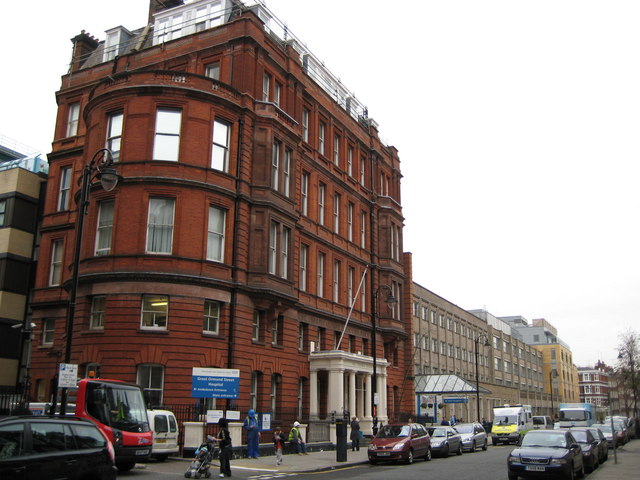Cellectis technician, Paris
Gene Editing Credited With Eliminating an Infant’s Aggressive Cancer in London
A significant step in quest to treat deadly diseases by altering the human genome
A novel gene-editing technique has been used to eliminate an infant’s aggressive cancer, a small but significant step in the quest to treat deadly diseases by altering the human genome.
When conventional treatments including chemotherapy and a bone-marrow transplant didn’t work, the girl was given just weeks or months to live. Her doctors then used gene editing to make special cells that would destroy the cancer. A few weeks after the designer cells were injected, her leukemia disappeared. Three months later, it remains at bay.
“We’ll start talking about a cure only a year or two from now” provided the cancer doesn’t return, said Paul Veys, the doctor in charge of the patient’s treatment at the Great Ormond Street Hospital for Children in London, where the procedure was done.

Great Ormond Street Hospital
There are other reasons to be cautious. The treatment has been tried on only one patient so far, with limited follow-up time. While some of the data will be presented at a scientific meeting in Florida in December, the research hasn't yet been peer-reviewed or published in a journal.
In gene editing, certain molecules are used as tiny scissors to cut and fix a broken gene in a cell. The hope is to edit out faulty pieces of DNA and thereby treat a genetic disease.
The approach is also controversial because there are worries that it may one day be used change genome of human embryos and thus create traits such as eye or hair color which are unrelated to any medical benefit—the specter of “designer babies.”
Nonetheless, drawn by the medical promise, several large companies, including Pfizer Inc., AstraZeneca PLC and Novartis AG have recently begun to work with gene-editing tools. Many biotechnology firms and academic researchers are experimenting with the technique, especially a powerful approach known as CRISPR-Cas9. Sangamo BioSciences Inc. of the U.S. is testing a rival gene-editing technique known as “zinc finger nucleases” in HIV patients.
Gene-Editing with CRISPR-Cas9
The infant who was treated in London, Layla, suffered from relapsed acute lymphoblastic leukemia, a form of blood cancer that can spread very fast. Once conventional therapy had failed, her doctors had almost no options left.
Some leukemia patients can be treated with an experimental technique called CAR, which has shown some success in U.S. trials. It involves removing the patient’s immune cells [known as T cells], genetically engineering them so they are more effective at tracking down and killing leukemia cells, then reintroducing them into the patient.
The problem was that Layla didn’t have enough of her own healthy immune cells because so many had been destroyed by chemotherapy. So the normal CAR method was ruled out. But would it be possible to use T cells from a healthy donor? For this, the Great Ormond Street doctors, as well as investigators from University College London, turned to Cellectis, a French biotech firm in which Pfizer holds an 8% stake.
Leukemia cells are extremely good at evading the patient’s immune system. To get around this problem, Cellectis used the CAR method to change a donor’s cells in such a way that they could now seek and kill previously hidden leukemia cells.
Then, a gene editing tool called TALEN was used to disarm the donor’s “foreign” cells so that they wouldn't attack the girl’s body. TALEN was also used to change the donor cells so they became invisible to the powerful leukemia drugs given to the girl, which would otherwise have killed them.
A few weeks after the engineered donor cells were given to Layla, her leukemia went into deep remission, her doctors said. She was then given a bone-marrow transplant to boost her immune system, which had been wiped out by the treatment. She is now recovering at home.
“It’s very exciting but it is early days,” said Matt Kaiser, head of research at U.K. charity Bloodwise that funds research on blood cancers, and who wasn’t involved in Layla’s treatment. To validate the approach tried in Layla, he added, “there clearly needs to be long term clinical studies, with more patients. We need to understand who responds and who doesn’t, and what the long term results are.”
Cellectis plans to start testing its product in more patients starting early next year. If the Layla results can be replicated, the gene editing approach may offer a new way to fight leukemia and perhaps other cancers.
Write to Gautam Naik at gautam.naik@wsj.com
